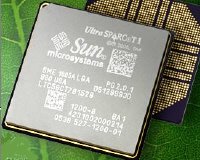100$ Laptop
 MIT Media Lab's research initiative, to build a $100 laptop for students across the globe is chugging along, with Nicholas Negroponte, laboratory chairman and co-founder, MIT, to demonstrate a working prototype at the World Summit on the Information Society, the giant UN-sponsored gathering that starts Wednesday in Tunis.
MIT Media Lab's research initiative, to build a $100 laptop for students across the globe is chugging along, with Nicholas Negroponte, laboratory chairman and co-founder, MIT, to demonstrate a working prototype at the World Summit on the Information Society, the giant UN-sponsored gathering that starts Wednesday in Tunis.According to reports, Steve Jobs had offered to provide free copies of OS X to the project, but his offer was turned down because OS X is not open source and the creators wanted an operating system where the source code is open and can be altered and tinkered with. Ironically, OS X is based on Unix which is open source.
Negroponte has said that this technology could revolutionize how we educate the world's children. The $100 machine will be a full-color, full-screen laptop that is Linux-based and running on AMD processors. The device is a stripped-down affair, with an electricity-generating crank and a swiveling seven-inch screen, for basic word-processing, Internet and communications. It has no hard drive, instead using flash memory like that in a digital camera. The processor, from AMD, runs at a pokey 500 megahertz. Each laptop will include a Wi-Fi radio transmitter designed to knit machines into a wireless "mesh" so they can share a Net connection, passing it from one computer to the next. Though there is a power cord, that cool crank can provide roughly ten minutes of juice for each minute of turning. But the key to chopping the price to $100 was the step towards reducing the cost of the screen. Negroponte's chief technology officer Mary Lou Jepsen, who used to work at Intel, has invented a display she thinks could be built for $35 or less (compared with the typical $100 or more).
These rugged laptops will be able to do almost everything, except store huge amounts of data. Five corporate sponsors; the likes of Google, AMD and Red Hat, have contributed $2 million each to the project.
Negroponte reportedly came up with the $100 laptop idea, after seeing children in a Cambodian village benefit from having notebook computers at school, which they could also take home and use. Negroponte has said that the laptop is a cost-effective alternative to hiring additional teachers, and is aimed at helping children teach themselves. As he puts it in an interview: "One laptop per child: Children are your most precious resource, and they can do a lot of self-learning and peer-to-peer teaching. Bingo. End of story."


